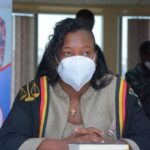The World Health Organization (WHO) has announced its involvement in probing an outbreak of an undiagnosed illness in the Democratic Republic of the Congo (DRC). The disease, which first emerged in mid-October in the Panzi health zone of Kwango province, has affected at least 406 people as of December 5, according to WHO’s recent update.
Symptoms reported include fever, headache, cough, body aches, and runny noses, with severe cases linked to acute malnutrition. Tragically, 31 deaths have been confirmed, although officials note this number does not account for fatalities within the community that have yet to be verified. Most of the cases involve young children, particularly those under five years old.
The WHO has deployed rapid response teams to the affected area to investigate. These teams are collecting clinical samples for laboratory analysis and working to better understand the outbreak’s transmission and clinical characteristics.
“Malaria, a common illness in the region, could be a contributing factor, but other conditions such as acute pneumonia, influenza, COVID-19, and measles are also under investigation,” said a WHO spokesperson.
Early data from DRC’s Ministry of Health highlights that 96% of cases involve fever, while difficulty breathing, anemia, and acute malnutrition are the main symptoms linked to fatalities. In addition, laboratory testing aims to rule out or confirm potential causes, as experts suspect more than one illness could be driving the outbreak.
The region’s challenging infrastructure, including limited diagnostic capacity and poor road networks, is hampering response efforts. However, WHO emphasizes its commitment to providing a detailed clinical and epidemiological assessment as investigations progress.
This outbreak underscores the urgent need for enhanced healthcare access and nutrition programs in vulnerable communities like those in Kwango province, where malnutrition significantly exacerbates health risks among children.
























